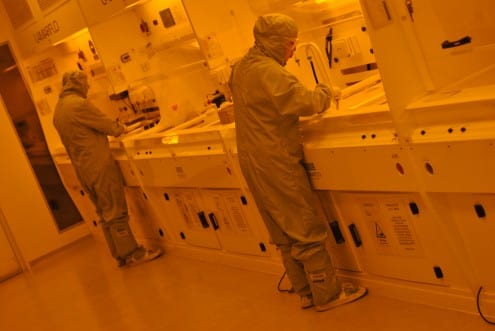Cleaning up in the cleanroom
By Oli Usher, on 30 June 2014
Many scientific processes need spotlessly clean labs. In the life sciences, samples can be contaminated by bacteria or moulds; in chemistry, samples may become impure. In the London Centre for Nanotechnology, where scientists and engineers develop and study microscopic devices, dust is one of the major enemies – and it must be excluded before the researchers can do their work.
The LCN’s cleanroom is a large, sealed facility in which much of this type of research takes place. Users of the facility have to wear special protective suits to prevent dirt and dust from their clothes from contaminating the lab, while any equipment brought into the room needs to be carefully cleaned.
This spotlessly clean environment means that highly precise work can be carried out. One example is photolithography, where the tiny electronic circuits on chips are etched using ultraviolet light. (The room is lit in orange, which is far away from ultraviolet in the electromagnetic spectrum, to avoid damaging this process.) The clean environment helps ensure that the correct patterns are imprinted on the silicon surfaces.
 Close
Close



